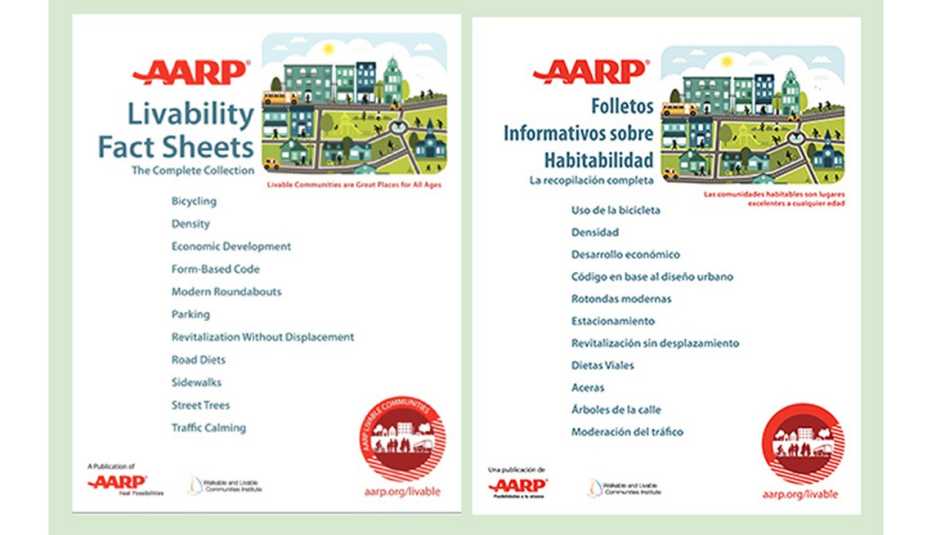AARP Hearing Center


A package of comprehensive, easy-to-read, award-winning livability resources, the 11 fact sheets can be used by community leaders, policy makers, citizen activists and others to learn about and explain what makes a city, town or neighborhood a great place for people of all ages. After all, a street that's made safer for an older adult to walk across is safer for a person walking to work, a parent pushing a stroller, a child riding a bicycle to school.
Each fact sheet is a four-page PDF document that can be read online or downloaded and printed.
This page can be reached directly via the URL AARP.org/livability-factsheets.
Download the collection:
- English: AARP Livabilty Fact Sheets: The Complete Collection
- Spanish: AARP Folletos Informativos sobre Habitabilidad: La recopilación completa
Download individual fact sheets:
Bicycling: Half of all trips taken in the U.S. are three miles or less, yet only 3 percent of commuting trips are by bicycle. By helping communities embrace bicycling as a healthy and viable transportation option, we can improve our numbers.
Density: The aging U.S. population and ongoing decline in the share of households with children is boosting the demand for smaller homes in more compact neighborhoods.
Economic Development: Walkable, bike-friendly, age-friendly livable communities both save and make money — and they're very good for business.
Form-Based Code: By using the physical form rather than the separation of uses as an organizing principle, form-based code offers a powerful alternative to conventional zoning.
Modern Roundabouts: Circular intersections that move traffic counterclockwise around a central island can help reduce traffic-related deaths and injuries. Sometimes it's smart to drive around in circles.
Parking: The average American household has 1.9 vehicles, and finding a place to put them when not in use consumes land, time and money. Here's how we can do a better job parking our cars.
Revitalization Without Displacement: As communities are redeveloped to become more livable, the efforts risk displacing an area’s current, often longtime residents and businesses. Redevelopment efforts can benefit all residents, regardless of income or age.
Road Diets: Supersized, multilane roadways are fast-moving, unattractive and often impossible to cross. To protect both pedestrians and drivers many communities are putting their roads on "diets" by reducing street widths and the number of vehicle lanes.
Sidewalks: As public spaces, sidewalks are the front steps to a community, activating streets both socially and economically. It makes little sense that in so many neighborhoods, sidewalks are rare and even non-existent.
Street Trees: To quote a Chinese proverb, "The best time to plant a tree was 20 years ago. The second best time is now." Here's why tree-lined streets matter.
Traffic Calming: Measures used to slow motor-vehicle traffic, often without reducing overall daily traffic volumes, increase safety and create a balanced urban environment for all users, including pedestrians and bicyclists.
Page published Spring 2014
































































